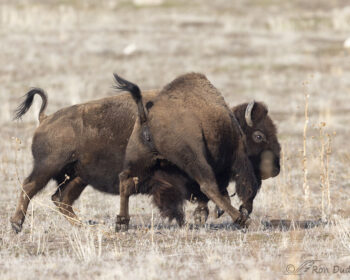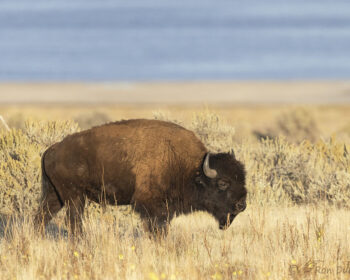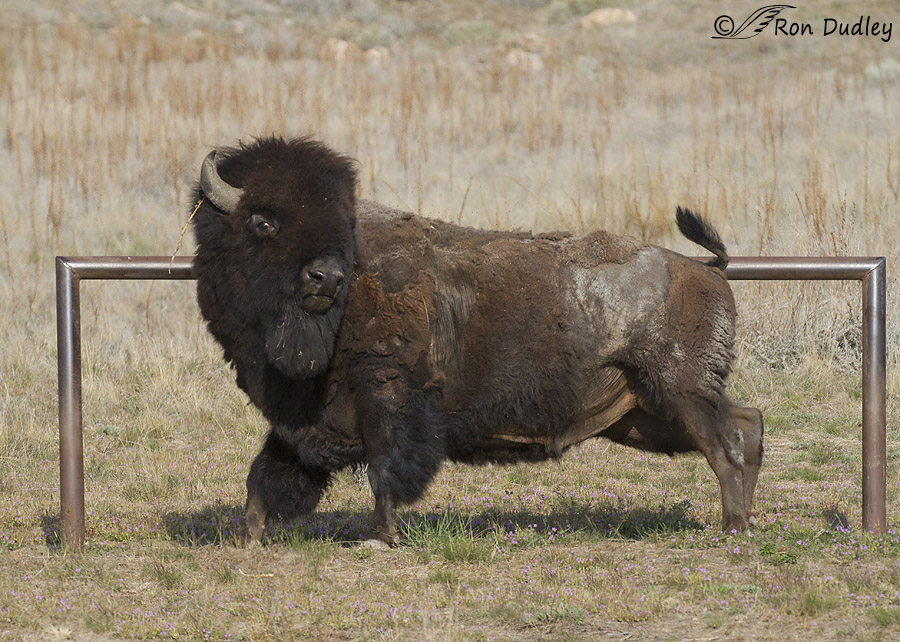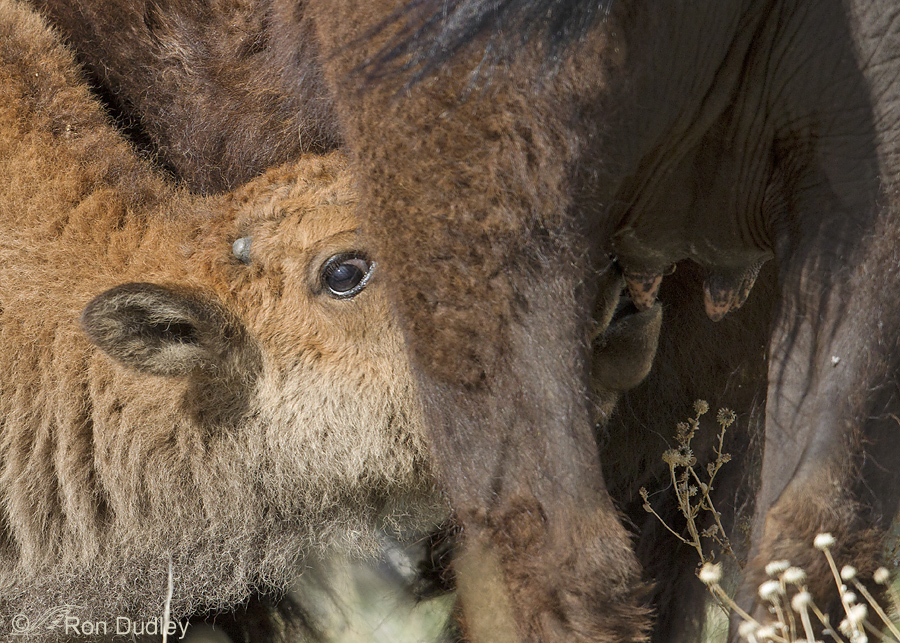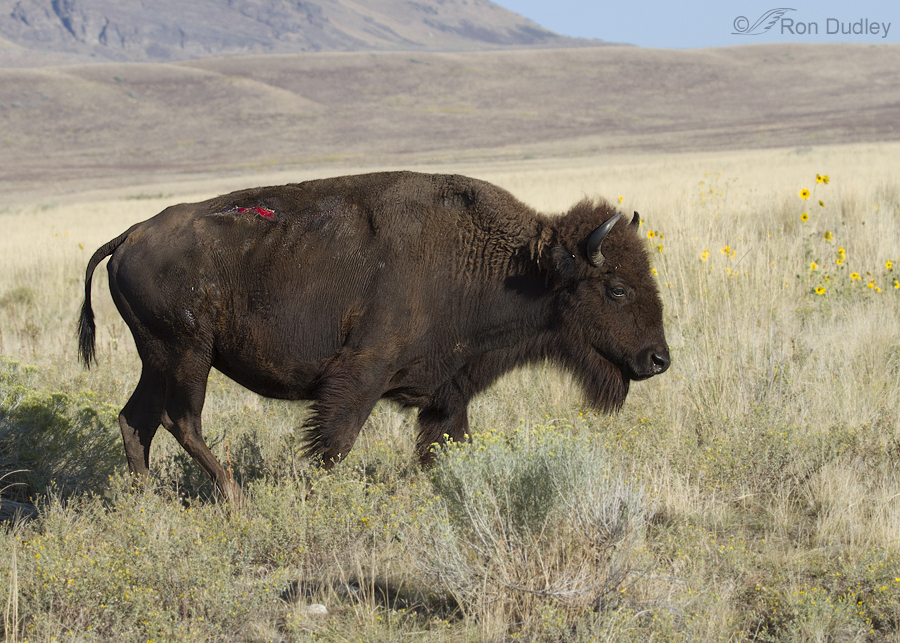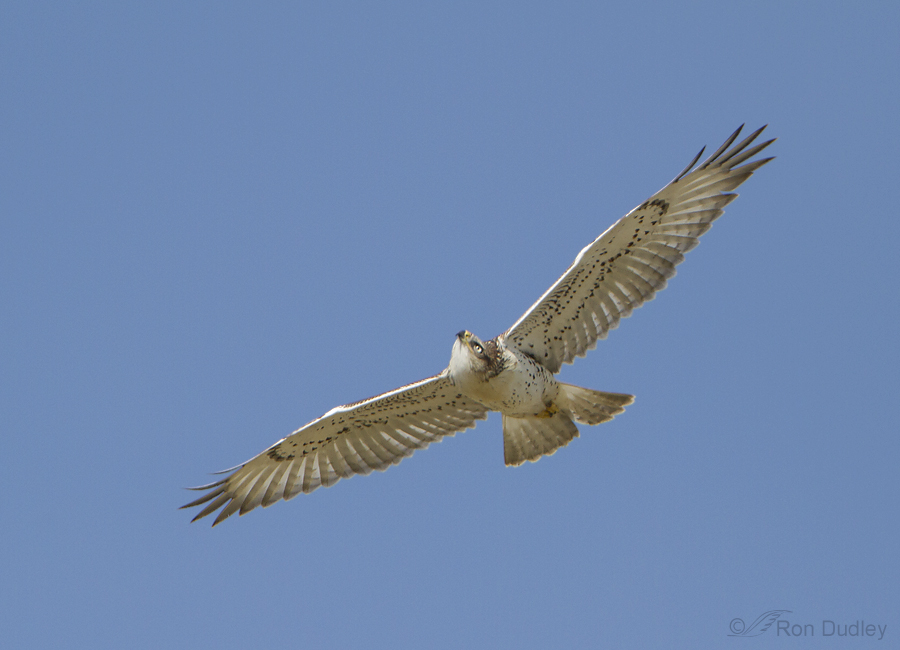Tag: buffalo
“The American Buffalo” – A Review Of Sorts
Bison At The Scratchin’ Post (and a recycling lesson from critters)
Bison Calf Getting Breakfast At Its Source
A Bison’s Life Isn’t Easy
Ferruginous Hawk In Flight
Mucus-drinking Cowbird
Before Europeans came to North America and cleared forests which modified the environment into the agricultural and suburban landscapes of today, the range of the Brown-headed Cowbird was limited to the short-grass plains where they followed the almost endless herds of American Bison as they fed on the insects stirred up by those wandering behemoths. Early settlers so strongly associated them with bison that they were called “Buffalo Birds”. Today that relationship still exists wherever limited numbers of bison can still be found. Antelope Island is one of those places. One of the many challenges facing the cowbird was obtaining enough moisture as it followed the bison herds over the hot, rolling plains. In late summer several years ago I photographed a cowbird behavior that illustrated one of the ways they solved that problem. I found this huge bull languishing in the broiling sun next to a boulder that it had been using as a scratching post. A group of Brown-headed Cowbirds were in the vicinity but at first I wasn’t paying much attention to them. Then this female (at frame bottom) flew in close… and began flying at the nostrils of the bull. Initially I was unsure about what she was doing but she did it repeatedly and eventually it became clear that she was… drinking the mucus-laden secretions from the bison’s nostrils. She would actually hover in place as she gobbled down the long, stringy strands of mucus. Not a pretty sight and perhaps a bit unsettling to our human sensibilities but what an incredibly adaptive behavior…
Another Act Of Idiocy On Antelope Island
Yesterday, while showing some out-of-town friends around Antelope Island, we came upon this cyclist who had left his bike on the road and walked up to within a few feet of this bison in order to photograph it. At first he was much closer to the animal than you see here but when the bison began to show signs of irritation the cyclist backed off a few feet and continued to take photos. I stopped my vehicle and grabbed my “other” camera because I figured that something unpleasant might go down but in the excitement I bumped the control wheel on the camera and skewed my settings so the resulting photos are of poor quality and for documentation only. I’ve disguised the face of the cyclist. Before I could get off any shots of the cyclist photographing the bison the massive animal charged. This guys reactions were pretty quick. Here the cyclist doesn’t yet know that the bison’s charge was apparently a bluff… but he does now. This guy didn’t even have a vehicle to run to for protection – only his bike. And incredibly, after the charge, he turned around and approached the bison again. This kind of stupidity puts both humans and animals at risk. If the cyclist had been killed or injured I suspect the bison would have been destroyed. Similar unthinking behaviors from island visitors occur regularly on the island as I’ve documented before. The “Darwin Awards” in action… Ron
The Timelessness of a Buffalo Chip Perch
The American Bison is a relative newcomer to North America, having migrated from Eurasia over the Bering Straight about 10,000 years ago. As is common knowledge they once roamed in massive herds across most of the continent until commercial hunting and slaughter reduced their numbers to a few hundred by the end of the 19th century. 1/500, f/6.3, ISO 500, 500 f/4, 1.4 tc Today a herd of approximately 500 animals roams free on Antelope Island and that many large animals produce a lot of poop – commonly referred to as “buffalo chips”. Those chips are all over the island – like small dark islands in a sea of prairie grasses and tiny flowers and they’re tempting perches for a variety of bird species like Horned Larks and Meadowlarks. But this past week I was able to catch some larger birds using them as perches. 1/2000, f/6.3, ISO 500, 500 f/4, 1.4 tc In the spring some of the shorebirds and wading birds come up from the shore of the Great Salt Lake to higher ground on the island for their breeding activities – Long-billed Curlews among them. It seems that the added height of only a couple of inches provided by the chip is enough to significantly improve their view of the landscape for potential predators and also to help them keep an eye on other curlews in the area – there’s a lot of fighting and mating activities going on this time of year. To some viewers such a perch may have no aesthetic draw but I’m…
Early Spring Birds and Craziness on Antelope Island
Typically our first spring camping trip is a shake-down cruise for the trailer to Antelope Island. If anything goes wrong with the trailer (and it sometimes does after sitting all winter) I’ll be relatively close to home. This year we spent the last two days of March on the island. Most of the photos in this post were taken on that trip. 1/2500, f/6.3, ISO 500 There’s been a few Western Meadowlarks on the island for much of the winter but they’ve returned in large numbers now. In all my travels in the west I don’t think I’ve ever seen any other area with such a high concentration of this species. At times their beautiful song resonates all over the hills of the island. Meadowlarks always bring back fond memories for me of growing up on the Montana farm. 1/2500, f/6.3, ISO 500 Loggerhead Shrikes are another very common species, especially on the northern part of the island. They’ve been absent all winter but we’re seeing more of them on each visit now. It was cloudy when this image was taken and I didn’t get a lot of light in the eye but I think there’s just enough. 1/2500, f/7.1, ISO 500 I always look forward to the return of the Long-billed Curlews with great anticipation and they started appearing about 10 days ago. I was happy to get this shot of the male on the right displaying for the female. Male and female curlews are almost identical but they can be differentiated by their…


